 |
 |
 |
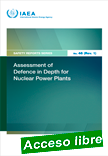 |
Assessment of Defence in Depth for Nuclear Power Plants
Safety Reports Series No. 46 (Rev.1)¦English ¦ STI/PUB/2008 ¦ 96 pages ¦ Date published: 2024
This publication describes the updated version of the method for the assessment of comprehensiveness of defence in depth and demonstrates the overall improvement in assessment results when using it. For assessment of comprehensiveness, five levels of defence in depth are considered. To ensure that safety objectives are met at each level of defence in depth, the integrity of relevant fission product barriers is maintained by the safety functions.
|
A set of challenges to the performance of safety functions and the mechanisms leading to the challenges are specified by the method. Finally, a comprehensive list of safety provisions, which contribute to preventing these mechanisms from occurring, is specified. These provisions encompass the inherent safety features, equipment, procedures, personnel availability, personnel training and safety culture aspects. The challenges, mechanisms and provisions for all levels of defence in depth are presented in the assessment method in the form of objective trees.
|
 |
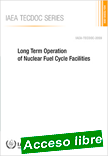 |
Long Term Operation of Nuclear Fuel Cycle Facilities
IAEA-TECDOC-2059 ¦ English ¦ 166 pages ¦ Date published: 2024
Nuclear fuel cycle facilities (NFCFs) have played a major role in the development and application of nuclear technologies in various fields, including nuclear power and nuclear science and technologies for over seven decades. Approximately 70% of the operating NFCFs in the world are more than 30 years old, thus it is important that life management programmes are established and implemented.
|
This publication provides practical information on factors affecting ageing and their consequences, and mitigating action required for nuclear fuel cycle facilities in the operational stage including modernization and refurbishing. It also provides the considerations for long term operation of a nuclear fuel cycle facility. The information in this publication will be useful to the operating organizations, regulatory bodies and other organizations involved in the design, construction, operation and management of nuclear fuel cycle facilities’ safety.
|
 |
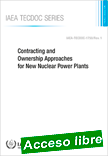 |
Contracting and Ownership Approaches for New Nuclear Power Plants
IAEA-TECDOC-1750/Rev. 1 ¦ English ¦ 89 pages ¦ Date published: 2024
This publication explores the variety of contracting and ownership approaches for a nuclear power plant, illustrated with recent case studies, to assist Member States in understanding the range of options available and the associated benefits and challenges of each approach. Regardless of the approach adopted, the requirements for the safe, secure and peaceful operation of a nuclear power plant remain the same.
|
This publication is intended for authorities responsible for designing, implementing, and sustaining nuclear security systems and measures within a State, such as personnel from the Ministry of Interior, Law Enforcement Agencies, Health Authorities, National Regulators, Emergency Response, and National Security Organizations.
|
 |
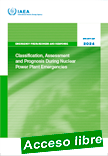 |
Classification, Assessment and Prognosis During Nuclear Power Plant Emergencies: Guidelines on Providing Information to the On-site and Off-site Protective Action Decision Makers
EPR-NPP-CAP 2024 ¦ English ¦ 60 pages ¦ Date published: 2024
This publication provides practical guidance and tools on the symptom and event based emergency classification, as part of the A&P of a nuclear emergency at an NPP or spent fuel pool (SFP). The A&P process described here applies to all NPP and SFP emergencies, regardless of the cause.
|
Two key needs are addressed. The first is for guidance to support the decision making process relating to the declaration of a nuclear emergency at an NPP or SFP. The second is for guidance to obtain a good understanding of the status of an NPP involved in a nuclear emergency.
|
 |
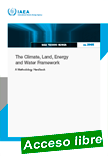 |
The Climate, Land, Energy and Water Framework: A Methodology Handbook
IAEA-TECDOC-2065 ¦ English ¦ 41 pages ¦ Date published: 2024
To support Member States in elaborating integrated strategies to achieve the UN Sustainable Development Goals, the IAEA has developed the CLEW (climate, land, energy and water) framework, in cooperation with other UN organizations and scientific experts. The objective of this publication is to provide guidance on the application of the CLEW framework, which integrates quantitative tools for climate, land, energy and water modelling and facilitates collaboration between experts and policymakers in these domains.
|
The publication is intended to serve as a reference for practitioners in Member States, international organizations, and NGOs seeking to apply integrated assessment approaches and methodologies to develop coherent sustainable and climate resilient energy, water and land use strategies.
|
 |
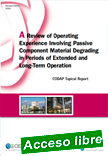 |
A Review of Operating Experience Involving Passive Component Material Degrading in Periods of Extended and Long-Term Operation
OECD, Nuclear Energy Agency ¦ English ¦ 152 pages ¦ Date published: 2024
This publication addresses trends and patterns in material degradation as a function of nuclear power plant ageing, which is a key topic in the regulation of ageing management programmes, codes and standards, reliability and integrity management, and the many supporting research programmes.
|
It documents insights reached from operating experience involving passive metallic components in commercial nuclear power plants during periods of extended operation and long-term operation. These evaluations are enabled by an NEA joint project entitled the Component Operational Experience, Degradation and Ageing Programme (CODAP). Established in 2002, the project has developed a comprehensive database on the operating experience with material degradation mechanisms that have produced failures of piping and selected non-piping passive components. Examinations of graphical plots were performed to reach insights about the different material degradation mechanisms as a function of plant age. The report also includes recommendations for future work.
|
 |
 |
Guidance on Setting up a Comprehensive Cancer Centre
English ¦ STI/PUB/2070 ¦ 386 pages ¦ Date published: 2024
This IAEA-WHO framework serves as an invaluable resource for countries in their ongoing efforts to strengthen their capacity for cancer control. Sharing the expertise of professionals from around the globe, it comprehensively outlines the fundamental principles of multidisciplinary cancer care. Additionally, it provides detailed descriptions of the essential infrastructure, human resources, and equipment necessary to deliver various cancer services.
|
The purpose of this publication is to provide the context and requirements for specific services in a cancer centre, serving as guidance for evaluating and enhancing the quality of services. It is designed to support the growth and development of existing cancer centres, as well as in planning and establishment of new ones. By aligning with the main objectives of the IAEA Rays of Hope initiative, this publication contributes to the advancement of cancer care on a global scale.
|
 |
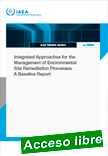 |
Integrated Approaches for the Management of Environmental Site Remediation Processes: A Baseline Report
IAEA-TECDOC-2064 ¦ English ¦ 128 pages ¦ Date published: 2024
The objective of this report is to provide an overview of frameworks, approaches and tools currently used in the scope of decision-making regarding environmental remediation projects. This publication also aims to identify gaps in existing knowledge and tools and make available an analysis of ways to improve the mechanisms that are currently used in decision-making in the scope of environmental remediation projects.
|
This publication is intended for policymakers, governmental organisations, industries related to naturally occurring radioactive materials (NORM), regulators, consultants in the area of NORM and academia.
|
 |
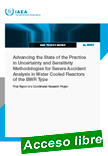 |
Advancing the State of the Practice in Uncertainty and Sensitivity Methodologies for Severe Accident Analysis in Water Cooled Reactors of the BWR Type: Final Report of a Coordinated Research Project
IAEA-TECDOC-2063 ¦ English ¦ 82 pages ¦ Date published: 2024
The IAEA facilitated the co-operation of research and development among its Member States on advancing the state-of-practice in uncertainty and sensitivity methodologies for severe accident analysis in water cooled reactors.
|
The main objective was to consolidate the existing knowledge related to uncertainty propagation in severe accident analyses in boiling water reactors (BWRs), and to enhance the expertise of practitioners in this specialized field. This publication showcases contributions from eight institutions from seven Member States, detailing their utilized methods for uncertainty and sensitivity analysis in severe accidents for BWR designs.
|
 |
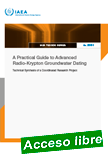 |
A Practical Guide to Advanced Radio-Krypton Groundwater Dating: Technical Synthesis of a Coordinated Research Project
IAEA-TECDOC-2061 ¦ English ¦ Date published: 2024
This publication provides detailed information on recent technical advancements and operational procedures achieved through the Coordinated Research Project (CRP) on “Use of Long-Lived Radionuclides for Dating Very Old Groundwater”. It covers field portable membrane gas extraction devices for sampling dissolved gases from groundwater aquifers, as well as a custom-built krypton purification system for purifying krypton from field-collected bulk gas samples. Additionally, the publication offers guidelines for selecting appropriate groundwater wells and sampling tools, as well as recommendations for proper sample handling and transportation.
|
These guidelines are essential to ensure smooth field sampling, which is vital for accurate isotope analysis and data interpretation. This publication is primarily aimed at professionals in hydrology and environmental science, including researchers and practitioners in isotope hydrology. It is also a valuable resource for groundwater resource managers and policy makers who oversee water sustainability initiatives as well as academic institutions and research labs specializing in earth sciences. It can also benefit government bodies and international organizations focused on environmental policy and water resource management.
|
 |
| |
|
|

|
|
|
| |
|
|
| |
| |
|
|
| |
| |
|
|
| |
| |
|
|
|
| |
| |
